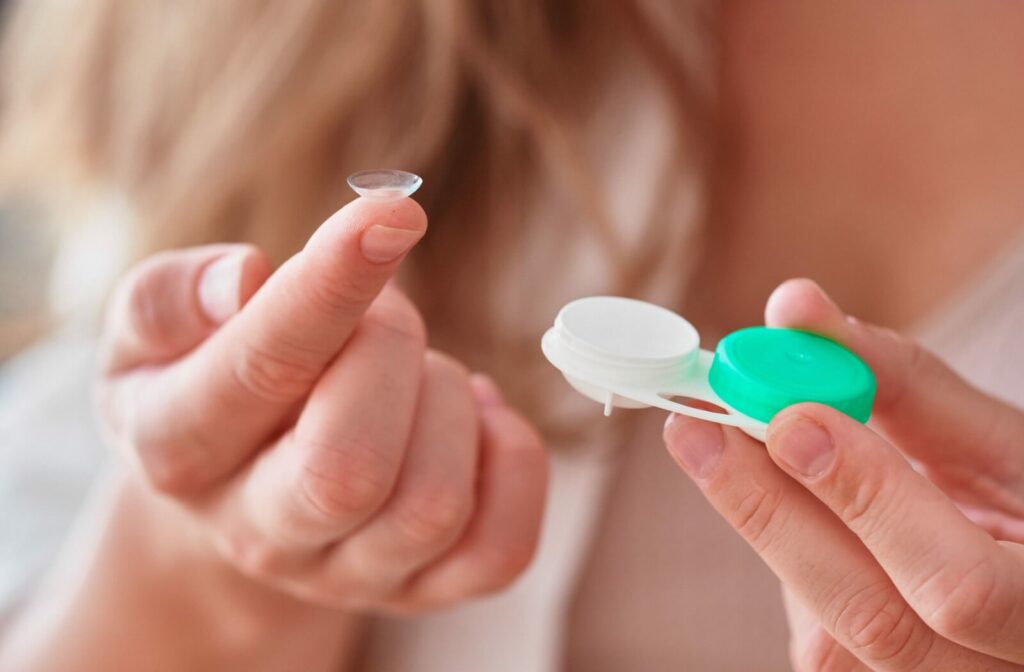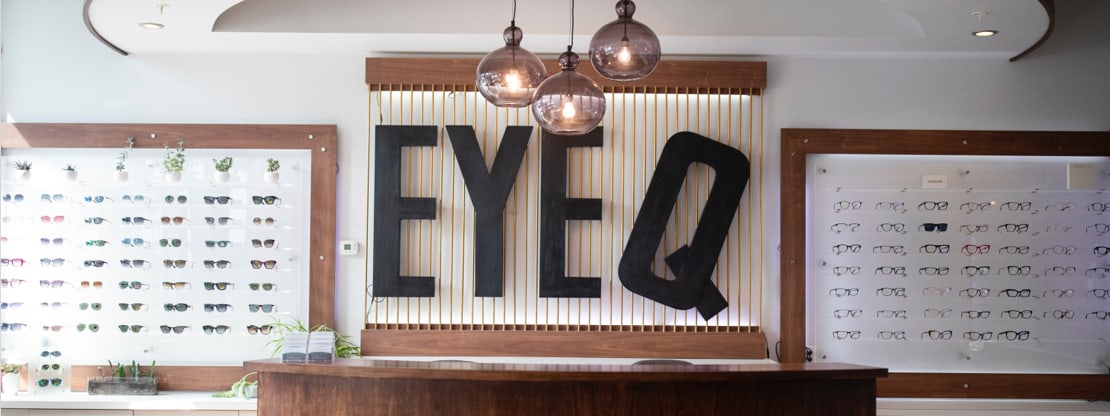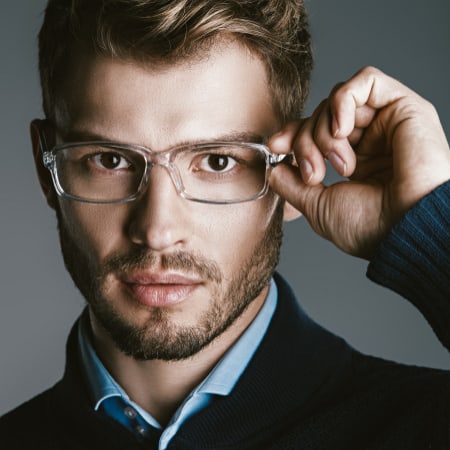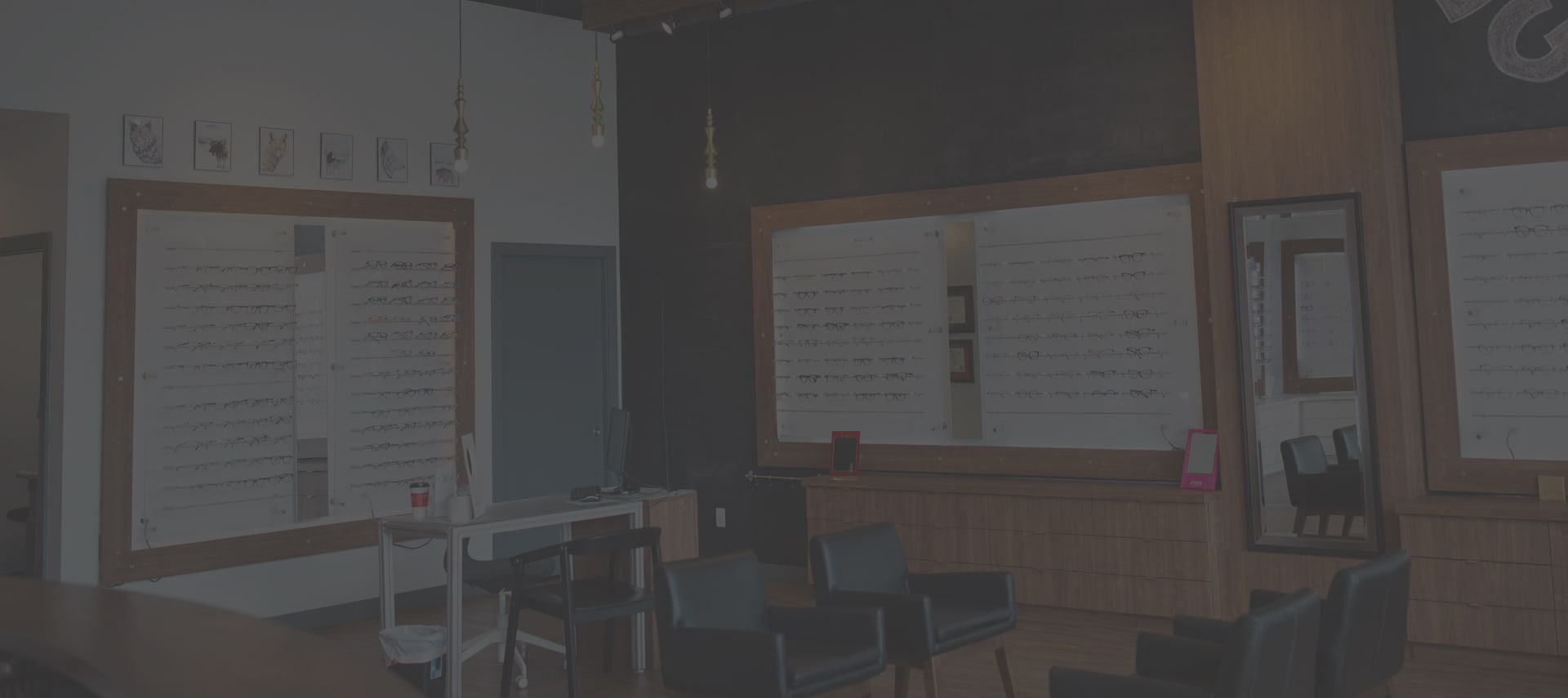Making the switch from eyeglasses to contact lenses is simple, but not as easy as swapping one prescription for the other. Contact lenses that feel comfortable and provide sharp, natural vision require attention to detail that goes beyond a routine eye exam.
A contact lens exam is different than a standard eye exam. Along with assessing your eye health and vision, a contact lens exam dives into the specifics of prescribing, fitting, and evaluating your eyes to find the contact lenses that fit you perfectly.
You can expect the contact lens exam and fitting to take about 45 minutes. An annual contact lens exam and fitting is a must for everyone. Even in a year, your eyes can change more than you think!
Reviewing Your Eye Health & Lifestyle
After assessing your vision and evaluating your eye health during your routine eye exam, the contact lens portion of your visit begins.
Before anything else, your optometrist will discuss your eye history, general health conditions, and lifestyle. Expect to answer questions like:
- Have you worn contact lenses before?
- Do you have any allergies or medical conditions?
- What’s your daily routine like? (e.g., Do you work long hours in front of a screen or play sports?)
This information helps us determine the right lenses for you. Daily disposables, for example, are great if you have dry or sensitive eyes, while monthly lenses can be more affordable. Assessing your vision determines whether you need specialty lenses, like toric (for astigmatism) or multifocal (for presbyopia).
Contact lenses are popular for a reason! Their unique design makes it possible to accommodate a variety of visual concerns, underscoring the importance of finding the lens that fits perfectly.
Measuring Your Eyes
The contact lens experience is far from universal. A person’s visual needs, lifestyle, and eye shape and size all differ. The key here becomes finding the perfect fitting contact lens, which is different for everyone.
Precise measurements are key. This brings us to the “fitting” aspect of your exam. We use precision to make sure the contacts sit comfortably on your eye without causing irritation or slipping out of place.
Here’s how we do it:
- Corneal curvature test: This measures the curve of the front surface of your eye (the cornea), capturing detailed images to find the right lens fit and size for your eye shape.
- Pupil and iris size: This is especially important if you’re considering specialty lenses like coloured or multifocal contacts.
- Tear film evaluation: We evaluate your tear film to make sure your eyes produce enough moisture to comfortably wear contact lenses. If you have dry eye, we may tackle this concern first or suggest hydrating contact lenses.
Prescription Update
A routine eye exam determines your prescription for glasses, but your contact lens prescription is a little different. This all comes down to the position of each corrective lens in relation to your eye.
Contact lenses sit directly on your eye rather than a few millimetres in front of it. The strength of the prescription reflects this shift, so that your lenses can provide sharp, effortless vision.
At the end of a contact lens exam, you receive a final prescription for both corrective lens options. If you’re taking a break from contacts, your glasses prescription will still be valid. Just make sure you use the correct prescription.

Trying on Trial Lenses
After all this prep work, now comes the fun part!
Your optometrist will provide trial lenses based on your measurements and prescription. You’ll try them on in the office to check the fit, comfort, and clarity of vision.
Here’s what your optometrist will be looking for:
- The fit: The lens should sit snugly on your cornea without pinching or moving too much when you blink.
- Visual clarity: Your optometrist will confirm that the lenses allow you to see clearly and that there’s no distortion.
- Overall comfort: The lenses should feel natural, with no irritation or dryness.
With the perfect fit and proper handling, contact lenses feel so comfortable, you may not even notice you’re wearing them.
Lens Care Instructions
Contact lenses are continuously interacting with your eyes, making proper care vital for your eye health, comfort, and visual clarity. Improper contact lens handling makes your eyes more vulnerable to irritation and increases the risks of serious concerns.
Think of it this way: contact lenses are medical devices and require proper care and handling for your safety and comfort.
If it’s your first time wearing contacts, or you’re switching to a different lens type, your optometrist will walk you through how to handle, clean, and store your lenses safely. You’ll also learn how to insert and remove your lenses. Don’t worry if it takes a few tries to master this step.
Follow-Up Appointment
We encourage you to wear your trial lenses for about a week to get a sense of how they fit, feel, and function in your daily life. Sampling them for several minutes during your contact lens exam isn’t always enough.
After wearing the trial lenses, we might schedule a follow-up appointment a week later to confirm they’re performing in real life the way we expect them to, depending on how much the prescription or fit was adjusted. During this visit, your optometrist will check the health of your eyes and the quality of your vision and make any necessary adjustments to your prescription or lens type.
Once everything is perfect, your optometrist will finalize your contact lens prescription, and you’re free to replenish or order your contact lens supply.
See Clearer, Live Better
Every person is different, and so are their eyes. A contact lens exam is the first step toward achieving clear, comfortable vision with lenses tailored just for you. Whether you’re new to contact lenses or a seasoned pro, annual contact lens exams are a must.
At Eye Q Optometry, our team takes the time to confirm you leave our office with not just a pair of lenses, but also the knowledge and confidence to care for them properly. Book your appointment with Eye Q Optometry today!










